tennis
sport
Introduction
original name lawn tennis
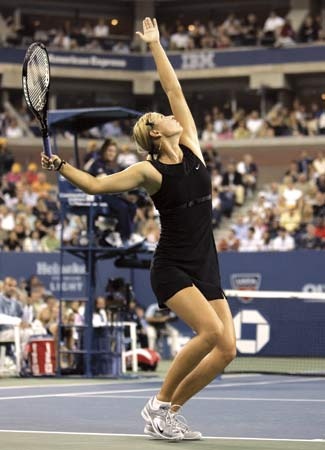 game in which two opposing players (singles) or pairs of players (doubles) use tautly strung rackets to hit a ball of specified size, weight, and bounce over a net on a rectangular court. Points are awarded to a player or team whenever the opponent fails to correctly return the ball within the prescribed dimensions of the court. Organized tennis is played according to rules sanctioned by the International Tennis Federation (ITF), the world governing body of the sport.
game in which two opposing players (singles) or pairs of players (doubles) use tautly strung rackets to hit a ball of specified size, weight, and bounce over a net on a rectangular court. Points are awarded to a player or team whenever the opponent fails to correctly return the ball within the prescribed dimensions of the court. Organized tennis is played according to rules sanctioned by the International Tennis Federation (ITF), the world governing body of the sport.Tennis originally was known as lawn tennis, and formally still is in Britain (United Kingdom), because it was played on grass courts by Victorian gentlemen and ladies. It is now played on a variety of surfaces. The origins of the game can be traced to a 12th–13th-century French handball game called jeu de paume (real tennis) (“game of the palm”), from which was derived a complex indoor racket-and-ball game: real tennis. This ancient game is still played to a limited degree and is usually called real tennis in Britain, court tennis in the United States, and royal tennis in Australia.
The modern game of tennis is played by millions in clubs and on public courts. Its period of most rapid growth as both a participant and a spectator sport began in the late 1960s, when the major championships were opened to professionals as well as amateurs, and continued in the 1970s, when television broadcasts of the expanding professional tournament circuits and the rise of some notable players and rivalries broadened the appeal of the game. A number of major innovations in fashion and equipment fueled and fed the boom. The addition of colour and style to tennis wear (once restricted to white) created an entirely new subdivision of leisure clothing. Tennis balls, which historically had been white, now came in several hues, with yellow the colour of choice. Racket frames, which had been of a standard size and shape and constructed primarily of laminated wood, were suddenly manufactured in a wide choice of sizes, shapes, and materials, the most significant milestones being the introduction of metal frames beginning in 1967 and the oversized head in 1976.
While tennis can be enjoyed by players of practically any level of skill, top competition is a demanding test of both shot making and stamina, rich in stylistic and strategic variety. From its origins as a garden-party game for ladies in whalebone corsets and starched petticoats and men in long white flannels, it has evolved into a physical chess match in which players attack and defend, exploiting angles and technical weaknesses with strokes of widely diverse pace and spin. Tournaments offer tens of millions of dollars in prize money annually.
History
Origin and early years
There has been much dispute over the invention of modern tennis, but the officially recognized centennial of the game in 1973 commemorated its introduction by Major Walter Clopton Wingfield in 1873. He published the first book of rules that year and took out a patent on his game in 1874, although historians have concluded that similar games were played earlier and that the first tennis club was established by the Englishman Harry Gem and several associates in Leamington in 1872. Wingfield's court was of the hourglass shape and may have developed from badminton. The hourglass shape, stipulated by Wingfield in his booklet “Sphairistiké, or Lawn Tennis,” may have been adopted for patent reasons since it distinguished the court from ordinary rectangular courts. At the time, the Marylebone Cricket Club (MCC) was the governing body of real tennis, whose rules it had recently revised. After J.M. Heathcote, a distinguished real tennis player, developed a better tennis ball of rubber covered with white flannel, the MCC in 1875 established a new, standardized set of rules for tennis.
Meanwhile, the game had spread to the United States in the 1870s. Mary Outerbridge of New York has been credited with bringing a set of rackets and balls to her brother, a director of the Staten Island Cricket and Baseball Club. But research has shown that William Appleton of Nahant, Massachusetts, may have owned the first lawn tennis set and that his friends James Dwight and Fred R. Sears popularized the game.
An important milestone in the history of tennis was the decision of the All England Croquet Club to set aside one of its lawns at Wimbledon (Wimbledon Championships) for tennis, which soon proved so popular that the club changed its name to the All England Croquet and Lawn Tennis Club. In 1877 the club decided to hold a tennis championship, and a championship subcommittee of three was appointed. It decided on a rectangular court 78 feet (23.8 metres) long by 27 feet (8.2 metres) wide. They adapted the real tennis method of scoring—15, 30, 40, game—and allowed the server one fault (i.e., two chances to deliver a proper service on each point). These major decisions remain part of the modern rules. Twenty-two entries were received, and the first winner of the Wimbledon Championships was Spencer Gore. In 1878 the Scottish Championships were held, followed in 1879 by the Irish Championships.
There were several alterations in some of the other rules (e.g., governing the height of the net) until 1880, when the All England Club and the MCC published revised rules that approximate very closely those still in use. The All England Club was the dominant authority then, the British Lawn Tennis Association (LTA) not being formed until 1888. In 1880 the first U.S. championship (United States Open Tennis Championships) was held at the Staten Island Cricket and Baseball Club. The victor was an Englishman, O.E. Woodhouse. The popularity of the game in the United States and frequent doubts about the rules led to the foundation in 1881 of the U.S. National Lawn Tennis Association, later renamed the U.S. Lawn Tennis Association and, in 1975, the U.S. Tennis Association (USTA). Under its auspices, the first official U.S. national championship (United States Open Tennis Championships), played under English rules, was held in 1881 at the Newport Casino, Newport, Rhode Island. The winner, Richard Sears (Sears, Richard Dudley), was U.S. champion for seven consecutive years.
Tennis had taken firm root in Australia by 1880, and the first Australian Championships (Australian Open) were played in 1905. The first national championships in New Zealand were held in 1886. In 1904 the Lawn Tennis Association of Australasia (later of Australia) was founded.
The first French Championships (French Open) were held at the Stade Français in 1891, but it was an interclub tournament that did not become truly international until 1925; the French (France) Federation of Lawn Tennis was established in 1920. Other national championships were inaugurated in Canada (1890), South Africa (1891), Spain (1910), Denmark (1921), Egypt (1925), Italy (1930), and Sweden (1936). In 1884 a women's championship was introduced at Wimbledon, and women's national championships were held in the United States starting in 1887.
Outstanding players
Tennis in the 1880s was dominated by the remarkable twin brothers William and Ernest Renshaw (Renshaw brothers). William won the Wimbledon singles championship seven times, on three occasions defeating his brother in the final. Ernest was victorious once, and in partnership they won the doubles championship, first played at Oxford in 1879, seven times.
In the 1890s public interest began to wane. The Wimbledon Championships showed a financial loss in 1894 and 1895; the All England Club committee turned back to croquet to revive its flagging fortunes. The popularity of Wimbledon and tennis were reestablished by two more brothers: Reginald and Laurie Doherty. Reginald won the Wimbledon singles from 1897 to 1900. Laurie won from 1902 to 1906, took the U.S. championship in 1903, and won a gold medal in the Olympic Games in 1900.
The early 20th century
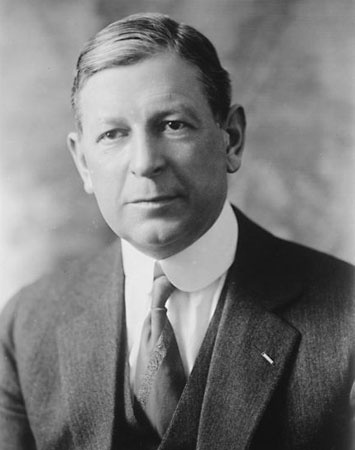 The first international team competition was the Davis Cup, officially called the International Lawn Tennis Challenge Trophy, which was donated by U.S. doubles champion Dwight Davis (Davis, Dwight F.) in 1900. Only Great Britain challenged the first year; it was defeated by the United States, Davis himself playing on the victorious team. There was no challenge in 1901, but in 1902 a strong British team that included the Doherty brothers went to America. The United States retained the trophy, but the following year the Doherty brothers helped Britain win the cup, which it retained the next three years.
The first international team competition was the Davis Cup, officially called the International Lawn Tennis Challenge Trophy, which was donated by U.S. doubles champion Dwight Davis (Davis, Dwight F.) in 1900. Only Great Britain challenged the first year; it was defeated by the United States, Davis himself playing on the victorious team. There was no challenge in 1901, but in 1902 a strong British team that included the Doherty brothers went to America. The United States retained the trophy, but the following year the Doherty brothers helped Britain win the cup, which it retained the next three years.The Doherty reign ended in 1906, but tennis was by then firmly established. The new star was Norman Brookes, the first in a long line of Australian champions and the first left-hander to reach the top. He won at Wimbledon in 1907 and again on his next visit, in 1914. He and his doubles partner, Tony Wilding of New Zealand, wrested the Davis Cup from Great Britain in 1907 and held it until 1911, arousing enduring public interest in Australia and New Zealand.
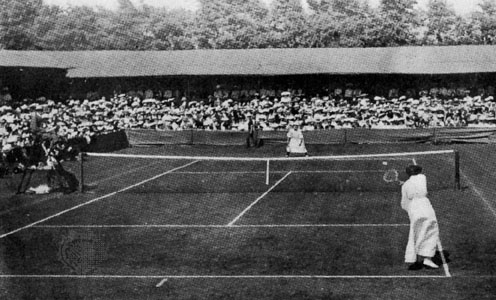 Of the women champions of the early 1900s, Dorothea Douglass (Chambers, Dorothea Lambert) (later Mrs. Lambert Chambers) won at Wimbledon seven times, beginning in 1903. In 1905, however, Douglass met her match in the first U.S. women's champion to win at Wimbledon, May Sutton, who again defeated her at Wimbledon in 1907. The outbreak of World War I in 1914 interrupted tennis activities in Britain and Europe, but, with the exception of 1917, when a Patriotic Tournament was held, U.S. championships continued to be played.
Of the women champions of the early 1900s, Dorothea Douglass (Chambers, Dorothea Lambert) (later Mrs. Lambert Chambers) won at Wimbledon seven times, beginning in 1903. In 1905, however, Douglass met her match in the first U.S. women's champion to win at Wimbledon, May Sutton, who again defeated her at Wimbledon in 1907. The outbreak of World War I in 1914 interrupted tennis activities in Britain and Europe, but, with the exception of 1917, when a Patriotic Tournament was held, U.S. championships continued to be played.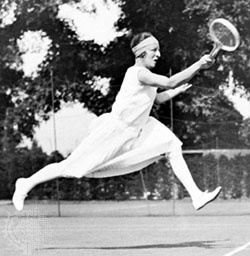 The dominant champions of the early postwar years were Bill Tilden (Tilden, Bill) of the United States and Suzanne Lenglen (Lenglen, Suzanne) of France. Tilden, the U.S. champion from 1920 through 1925 and again in 1929, won the Wimbledon title in 1920, 1921, and 1930. In the same period he also won 15 Davis Cup singles. Suzanne Lenglen reigned supreme over the ladies' game from 1919 to 1925; were it not for the war, she might have started her international career earlier. She won the Wimbledon championship at her first attempt in 1919, from 1920 to 1923, and in 1925, not competing in 1924 because of illness. She developed a powerful as well as accurate game by practicing with men, and she needed far more freedom of movement than restrictive ladies' fashion of that time allowed. Her first appearance at Wimbledon in a calf-length white dress with short sleeves and without petticoat or suspender (garter) belt caused a sensation.
The dominant champions of the early postwar years were Bill Tilden (Tilden, Bill) of the United States and Suzanne Lenglen (Lenglen, Suzanne) of France. Tilden, the U.S. champion from 1920 through 1925 and again in 1929, won the Wimbledon title in 1920, 1921, and 1930. In the same period he also won 15 Davis Cup singles. Suzanne Lenglen reigned supreme over the ladies' game from 1919 to 1925; were it not for the war, she might have started her international career earlier. She won the Wimbledon championship at her first attempt in 1919, from 1920 to 1923, and in 1925, not competing in 1924 because of illness. She developed a powerful as well as accurate game by practicing with men, and she needed far more freedom of movement than restrictive ladies' fashion of that time allowed. Her first appearance at Wimbledon in a calf-length white dress with short sleeves and without petticoat or suspender (garter) belt caused a sensation.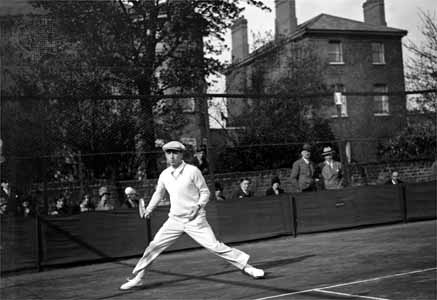 France also made its mark on men's tennis with the fabulous “Four Musketeers”—Jean Borotra (Borotra, Jean), Henri Cochet (Cochet, Henri), René Lacoste (Lacoste, René), and Jacques Brugnon (Brugnon, Jacques). Among them, they monopolized the Wimbledon singles title from 1924 through 1929, won 10 French and 3 U.S. singles championships, and won 5 Wimbledon and 10 French doubles championships. They captured the Davis Cup from the United States in 1927 and held it until 1933.
France also made its mark on men's tennis with the fabulous “Four Musketeers”—Jean Borotra (Borotra, Jean), Henri Cochet (Cochet, Henri), René Lacoste (Lacoste, René), and Jacques Brugnon (Brugnon, Jacques). Among them, they monopolized the Wimbledon singles title from 1924 through 1929, won 10 French and 3 U.S. singles championships, and won 5 Wimbledon and 10 French doubles championships. They captured the Davis Cup from the United States in 1927 and held it until 1933.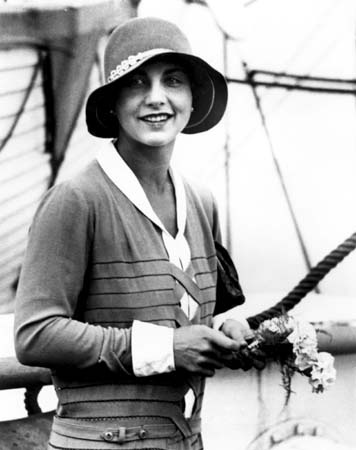 A new female American star, Helen Wills (Wills, Helen) (later Mrs. Moody and then Mrs. Roark), won the first of her seven U.S. singles titles in 1923; she went on to win at Wimbledon eight times between 1927 and 1938 and won the French singles four times between 1928 and 1932. (Wills wrote the article on lawn tennis for the 14th edition 【1929】 of Encyclopædia Britannica.) Only once, early in her career, did she play against Lenglen, at Cannes on the French Riviera, where she lost in two straight sets. That historic meeting between the poker-faced Wills, in her trademark white eyeshade, and the flamboyant Lenglen, in her daring dress and silk bandeau, was chronicled in sports and society pages on both sides of the Atlantic. Wills's great rival, however, was another American, Helen Jacobs (Jacobs, Helen Hull), Wimbledon champion in Wills's absence in 1936 and U.S. champion from 1932 to 1935.
A new female American star, Helen Wills (Wills, Helen) (later Mrs. Moody and then Mrs. Roark), won the first of her seven U.S. singles titles in 1923; she went on to win at Wimbledon eight times between 1927 and 1938 and won the French singles four times between 1928 and 1932. (Wills wrote the article on lawn tennis for the 14th edition 【1929】 of Encyclopædia Britannica.) Only once, early in her career, did she play against Lenglen, at Cannes on the French Riviera, where she lost in two straight sets. That historic meeting between the poker-faced Wills, in her trademark white eyeshade, and the flamboyant Lenglen, in her daring dress and silk bandeau, was chronicled in sports and society pages on both sides of the Atlantic. Wills's great rival, however, was another American, Helen Jacobs (Jacobs, Helen Hull), Wimbledon champion in Wills's absence in 1936 and U.S. champion from 1932 to 1935.The Englishman Fred Perry won the Wimbledon singles for three consecutive years (1934–36), the U.S. championship in 1933, 1934, and 1936, the Australian in 1934, and the French in 1935. From the United States came champions that included Sidney Wood, Ellsworth Vines, and Don Budge (Budge, Don), who in 1938 became the first man to win all four major titles—the Australian, French, Wimbledon, and U.S.—in one season, a feat that came to be known as the grand slam. Alice Marble (Marble, Alice), the most aggressive net rusher the women's game had seen to that time, won the U.S. singles in 1936 and from 1938 to 1940, and in 1939 she won the singles, doubles, and mixed doubles at Wimbledon, a “triple” previously accomplished only by Lenglen and Budge.
The postwar period
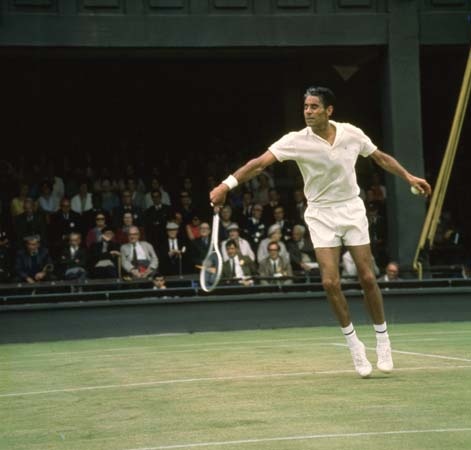
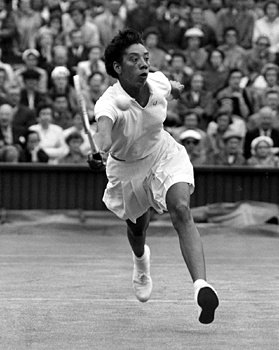 The development of the game was interrupted by World War II, but international tennis resumed in 1946 with American players again dominant, led by Jack Kramer (Kramer, Jack), the U.S. champion of 1946–47 and Wimbledon champion of 1947 before he turned professional. He was succeeded by Pancho Gonzales (Gonzales, Pancho), Bob Falkenburg, Frederick (Ted) Schroeder, J. Edward (“Budge”) Patty, and Dick Savitt. American women won every Wimbledon and U.S. singles title from 1946 through 1958, the string of champions including Pauline Betz, Louise Brough, Margaret Osborne DuPont, Doris Hart, Maureen Connolly (Connolly, Maureen Catherine), Shirley Fry, and Althea Gibson (Gibson, Althea), the first black champion. Connolly, nicknamed “Little Mo,” won the three Wimbledon and three U.S. championships that she played between 1951 and 1954 and in 1953 became the first woman to achieve the grand slam.
The development of the game was interrupted by World War II, but international tennis resumed in 1946 with American players again dominant, led by Jack Kramer (Kramer, Jack), the U.S. champion of 1946–47 and Wimbledon champion of 1947 before he turned professional. He was succeeded by Pancho Gonzales (Gonzales, Pancho), Bob Falkenburg, Frederick (Ted) Schroeder, J. Edward (“Budge”) Patty, and Dick Savitt. American women won every Wimbledon and U.S. singles title from 1946 through 1958, the string of champions including Pauline Betz, Louise Brough, Margaret Osborne DuPont, Doris Hart, Maureen Connolly (Connolly, Maureen Catherine), Shirley Fry, and Althea Gibson (Gibson, Althea), the first black champion. Connolly, nicknamed “Little Mo,” won the three Wimbledon and three U.S. championships that she played between 1951 and 1954 and in 1953 became the first woman to achieve the grand slam.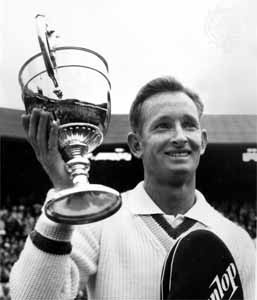 Australia ruled men's tennis in the 1950s and '60s, winning the Davis Cup in 15 of 18 years. Among the Wimbledon and U.S. singles champions who played for Harry Hopman, the outstanding nonplaying Australian captain, were Frank Sedgman, Lew Hoad (Hoad, Lew), Ken Rosewall (Rosewall, Ken), Mal Anderson, Ashley Cooper, Neale Fraser, Rod Laver (Laver, Rod), Fred Stolle, Roy Emerson, and John Newcombe.
Australia ruled men's tennis in the 1950s and '60s, winning the Davis Cup in 15 of 18 years. Among the Wimbledon and U.S. singles champions who played for Harry Hopman, the outstanding nonplaying Australian captain, were Frank Sedgman, Lew Hoad (Hoad, Lew), Ken Rosewall (Rosewall, Ken), Mal Anderson, Ashley Cooper, Neale Fraser, Rod Laver (Laver, Rod), Fred Stolle, Roy Emerson, and John Newcombe.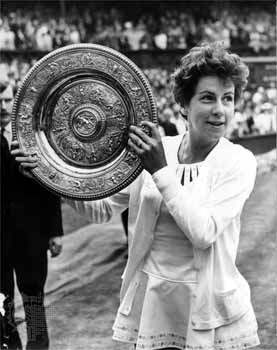 The broadening international horizons of the game were reflected in the Wimbledon triumphs of players such as Jaroslav Drobny, an expatriate Czech, in 1954 and Alex Olmedo, from Peru, in 1959 and in the victories of Mexican Rafael Osuna in the U.S. championship in 1963, Manuel Santana of Spain in the U.S. championship in 1965 and Wimbledon in 1966, and Brazilian Maria Bueno (Bueno, Maria Ester Audion), the U.S. champion four times and Wimbledon champion three times between 1959 and 1966.
The broadening international horizons of the game were reflected in the Wimbledon triumphs of players such as Jaroslav Drobny, an expatriate Czech, in 1954 and Alex Olmedo, from Peru, in 1959 and in the victories of Mexican Rafael Osuna in the U.S. championship in 1963, Manuel Santana of Spain in the U.S. championship in 1965 and Wimbledon in 1966, and Brazilian Maria Bueno (Bueno, Maria Ester Audion), the U.S. champion four times and Wimbledon champion three times between 1959 and 1966.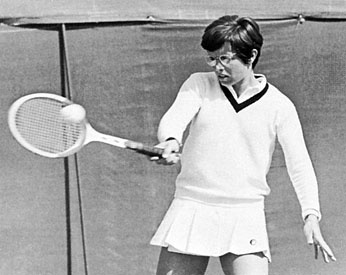 Australian Margaret Smith Court (Court, Margaret) was the second woman to win the grand slam, in 1970, and she set the all-time record for singles, doubles, and mixed doubles titles in the four major championships: 65 between 1960 and 1975, including 3 Wimbledon, 6 U.S., 5 French, and 11 Australian singles. Billie Jean Moffitt King (King, Billie Jean) set a record for career Wimbledon titles, winning 6 singles, 10 doubles, and 4 mixed between 1961 and 1979.
Australian Margaret Smith Court (Court, Margaret) was the second woman to win the grand slam, in 1970, and she set the all-time record for singles, doubles, and mixed doubles titles in the four major championships: 65 between 1960 and 1975, including 3 Wimbledon, 6 U.S., 5 French, and 11 Australian singles. Billie Jean Moffitt King (King, Billie Jean) set a record for career Wimbledon titles, winning 6 singles, 10 doubles, and 4 mixed between 1961 and 1979.Professional and open tennis
As tennis began to establish its popularity, there was a need for professionals to coach and to organize, but, unlike real tennis, there were no competitions in which professionals could play. This changed in 1926 when Charles C. (“Cash and Carry”) Pyle, a successful sports promoter in the United States, offered Suzanne Lenglen $50,000 to go on a professional tour of America playing Mary K. Browne, who had been U.S. singles champion from 1912 to 1914. He also signed four male players. The tour, played in major arenas, drew large crowds and was a financial success. For the next 40 years, pro tennis consisted primarily of barnstorming tours that featured the reigning champion playing a recently signed amateur champion.
Starting in the 1930s, many of the amateur champions became barnstorming professionals. After World War II, Jack Kramer became the pro champion and in the early 1950s took over promotion of the pro tour. He kept raiding the amateur ranks, signing such stars as Frank Sedgman, Tony Trabert, Lew Hoad, and Ken Rosewall. They made money with the one-night stands, but their matches were virtually unreported. Although the traditional tournament circuit was avowedly amateur, leading players were paid substantial guarantees “under the table” in addition to expenses. For more than four decades there was discussion of having “open” competition between amateurs and pros to end the hypocrisy of “shamateurism,” but proposals were always defeated by conservative elements within the International Lawn Tennis Federation (ILTF—later the ITF). In 1967, however, two new professional groups were formed: the National Tennis League, organized by former U.S. Davis Cup captain George MacCall, and World Championship Tennis (WCT), founded by New Orleans promoter Dave Dixon and funded by Dallas oil and football tycoon Lamar Hunt. Between them they signed a significant number of the world's top players, professional and amateur.
In 1967 a British proposal for a limited schedule of open tournaments was voted down by the international federation, but the British LTA refused to accept the verdict. In December 1967, despite the threat of expulsion from the ILTF, the LTA voted to abolish the distinction between amateurs and pros in their tournaments. This revolutionary step forced an emergency meeting of the ILTF in March 1968 in which 12 open tournaments were approved. The era of open professionalism in tennis dawned in 1968.
The open era
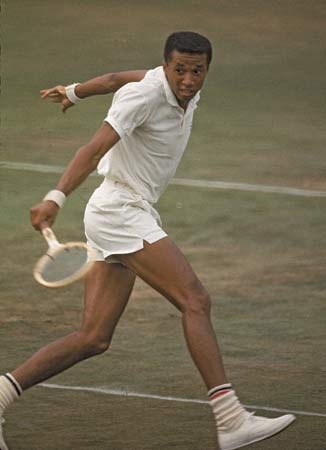 The first open tournament was the British Hard Courts at Bournemouth in April 1968, where the champions were Ken Rosewall and Virginia Wade. The first open Wimbledon was a joyous occasion, as many past champions who had been stripped of membership in the All England Club when they turned professional were welcomed back. The total prize money was £26,150 ($62,760), of which £2,000 went to men's singles champion Rod Laver (Laver, Rod) and £750 went to women's singles winner Billie Jean King. The singles titles at the first U.S. Open, with a total purse of $100,000, were won by Arthur Ashe (Ashe, Arthur), the sport's first black male champion, and Wade. Within two decades the major championships had multimillion-dollar purses, and top players could expect to earn in excess of $1,000,000 a year on the court alone. Laver became the first player to sweep the major titles a second time and the first to do so as a professional.
The first open tournament was the British Hard Courts at Bournemouth in April 1968, where the champions were Ken Rosewall and Virginia Wade. The first open Wimbledon was a joyous occasion, as many past champions who had been stripped of membership in the All England Club when they turned professional were welcomed back. The total prize money was £26,150 ($62,760), of which £2,000 went to men's singles champion Rod Laver (Laver, Rod) and £750 went to women's singles winner Billie Jean King. The singles titles at the first U.S. Open, with a total purse of $100,000, were won by Arthur Ashe (Ashe, Arthur), the sport's first black male champion, and Wade. Within two decades the major championships had multimillion-dollar purses, and top players could expect to earn in excess of $1,000,000 a year on the court alone. Laver became the first player to sweep the major titles a second time and the first to do so as a professional.The transition years from quasi-amateurism to full-fledged professional tennis were rife with political disputes and lawsuits for control of what had become a big-money sport. Both male and female players formed guilds—the men's Association of Tennis Professionals (ATP) and the Women's Tennis Association (WTA), which in 1986 became the Women's International Tennis Association (WITA). Previous player unions had been ineffective, but the ATP showed itself a potent political force when the majority of its members boycotted Wimbledon in 1973 in a dispute over the eligibility of the Yugoslav pro Nikki Pilic. The women's union proved similarly unified. The women have had a separate pro tour, except at the major championships, since 1971.
The first few seasons of open tennis were ruled by players who were products of the old system and reflected its behavioral standards and norms. These included the compact, classical Rosewall (Rosewall, Ken), the Australian John Newcombe, and the Americans Arthur Ashe and Stan Smith.
As television, in America and later worldwide, became an increasingly significant force in tennis, a new breed of flamboyant and often flippant, cocky, and quick-tempered player developed. Among them was Ilie Nastase (Nastase, Ilie)—a dark, handsome, mercurial Romanian noted for his rapid mood swings. While winning the 1972 U.S. Open, the 1973 French Open, and four Masters titles, he created chaos and controversy on the court with colourful, and occasionally off-colour, tantrums and tirades. He was perhaps an influence on Jimmy Connors (Connors, Jimmy), a brash American whose aggressive, blood-and-guts, all-court style and feisty temperament captivated audiences whether they loved or loathed him. In 1974 Connors won Wimbledon, the Australian Open, and the U.S. Open. In an intensely competitive era that produced short careers, Connors enjoyed extraordinary longevity at the top. He won Wimbledon again in 1982, the U.S. Open four more times, and the WCT Championship in 1977 and 1980.
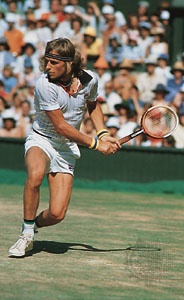 Following the fiery Connors as the dominant player was the relatively cool Björn Borg (Borg, Björn), who led Sweden to its first triumph in the Davis Cup in 1975. Practically unbeatable on slow clay, he won the French Open six times between 1974 and 1981 and remarkably adapted his game to fast grass, adding a sledgehammer serve and underspin approach shot, to win Wimbledon five years running, 1976–80. No player had done that since the champion had to play through the draw, starting in 1922. The American John McEnroe (McEnroe, John) ended Borg's Wimbledon reign in 1981 and beat him in the 1980–81 U.S. Open finals. Between 1979 and 1984 McEnroe, a torrid-tempered left-hander of exquisite athleticism and racket control, won Wimbledon three times, the U.S. Open four times, the Masters three times, and the WCT Championship four times.
Following the fiery Connors as the dominant player was the relatively cool Björn Borg (Borg, Björn), who led Sweden to its first triumph in the Davis Cup in 1975. Practically unbeatable on slow clay, he won the French Open six times between 1974 and 1981 and remarkably adapted his game to fast grass, adding a sledgehammer serve and underspin approach shot, to win Wimbledon five years running, 1976–80. No player had done that since the champion had to play through the draw, starting in 1922. The American John McEnroe (McEnroe, John) ended Borg's Wimbledon reign in 1981 and beat him in the 1980–81 U.S. Open finals. Between 1979 and 1984 McEnroe, a torrid-tempered left-hander of exquisite athleticism and racket control, won Wimbledon three times, the U.S. Open four times, the Masters three times, and the WCT Championship four times.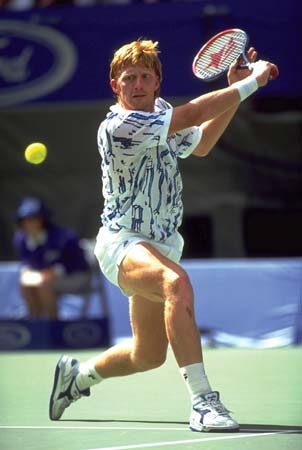 The balance of power in men's tennis shifted back to Europe in the 1980s. Borg inspired a new wave of players in Sweden. A sophisticated junior-development system created a group of Swedish players—led by 1982, 1985, and 1988 French Open champion Mats Wilander. Another European country with a long tennis tradition that reached new heights in the 1980s was Czechoslovakia. One of the foremost players and coaches in Europe in the 1920s and '30s was the Czech Karel Kozeluh. Czechoslovakia produced men's Wimbledon champions Jaroslav Drobny in 1954 and Jan Kodeš in 1973. Among the players to come out of Czechoslovakia's player-development system and become dominant in the 1970s and '80s were Martina Navratilova (Navratilova, Martina), who became a U.S. citizen; Hana Mandlikova, who became an Australian citizen in 1987; and Ivan Lendl, who took up residence in the United States. The European tennis boom of the 1980s also swept through West Germany, which produced Boris Becker (Becker, Boris), who won the Wimbledon singles in 1985 at age 17 (the youngest man and first unseeded player to do so), and Steffi Graf (Graf, Steffi), who in 1987 ended Navratilova's five-year reign as the top-ranked woman in tennis and in 1988 won the grand slam, becoming the first woman to do so since Margaret Court in 1970.
The balance of power in men's tennis shifted back to Europe in the 1980s. Borg inspired a new wave of players in Sweden. A sophisticated junior-development system created a group of Swedish players—led by 1982, 1985, and 1988 French Open champion Mats Wilander. Another European country with a long tennis tradition that reached new heights in the 1980s was Czechoslovakia. One of the foremost players and coaches in Europe in the 1920s and '30s was the Czech Karel Kozeluh. Czechoslovakia produced men's Wimbledon champions Jaroslav Drobny in 1954 and Jan Kodeš in 1973. Among the players to come out of Czechoslovakia's player-development system and become dominant in the 1970s and '80s were Martina Navratilova (Navratilova, Martina), who became a U.S. citizen; Hana Mandlikova, who became an Australian citizen in 1987; and Ivan Lendl, who took up residence in the United States. The European tennis boom of the 1980s also swept through West Germany, which produced Boris Becker (Becker, Boris), who won the Wimbledon singles in 1985 at age 17 (the youngest man and first unseeded player to do so), and Steffi Graf (Graf, Steffi), who in 1987 ended Navratilova's five-year reign as the top-ranked woman in tennis and in 1988 won the grand slam, becoming the first woman to do so since Margaret Court in 1970.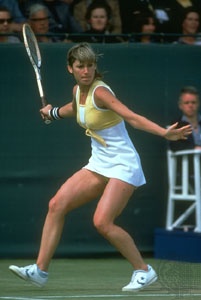 Graf's emergence also ended an extraordinary streak by the American Chris Evert (Evert, Chris), who had won at least one of the grand slam singles titles for 13 consecutive years, 1974–86, an unprecedented feat. A paragon of backcourt consistency and controlled temperament, Evert was the perfect contrast in both style and personality to several net-rushing rivals: the Australian Evonne Goolagong, who won her first Wimbledon in 1971 at age 19, Billie Jean King, and Navratilova, whom Evert played in 13 grand slam finals in one of the game's greatest rivalries. Evert, probably more than anyone, popularized the two-handed backhand, and she made a steady baseline game the prevalent style of a whole generation of women players.
Graf's emergence also ended an extraordinary streak by the American Chris Evert (Evert, Chris), who had won at least one of the grand slam singles titles for 13 consecutive years, 1974–86, an unprecedented feat. A paragon of backcourt consistency and controlled temperament, Evert was the perfect contrast in both style and personality to several net-rushing rivals: the Australian Evonne Goolagong, who won her first Wimbledon in 1971 at age 19, Billie Jean King, and Navratilova, whom Evert played in 13 grand slam finals in one of the game's greatest rivalries. Evert, probably more than anyone, popularized the two-handed backhand, and she made a steady baseline game the prevalent style of a whole generation of women players.During the 1990s Steffi Graf collected 14 of her 21 career grand slam singles titles. Tall and athletic, Graf used powerful ground strokes and excellent court coverage to dispatch opponents. Her primary rival during this period was Yugoslavia's Monica Seles, who collected seven grand slam titles between 1990 and 1992. Though Graf retired in 1999, the women's tour still boasted exceptional competition and talented players, such as Martina Hingis of Switzerland (winner of five major titles before the age of 20) and American Lindsay Davenport, who won titles at the U.S. Open (1998), Wimbledon (1999), and the Australian Open (2000). At the turn of the century, sisters Venus (Williams, Venus) and Serena Williams (Williams, Serena) of the United States emerged as a new force on the women's tour. Serena won the U.S. Open in 1999 and 2002, the French Open in 2002, Wimbledon in 2002 and 2003, and the Australian Open in 2003, 2005, and 2007. Venus won Wimbledon five times (2000–01, 2005, 2007–08), the U.S. Open twice (2000–01), and an Olympic gold medal in tennis (2000). The sisters were credited with popularizing the sport among African Americans.
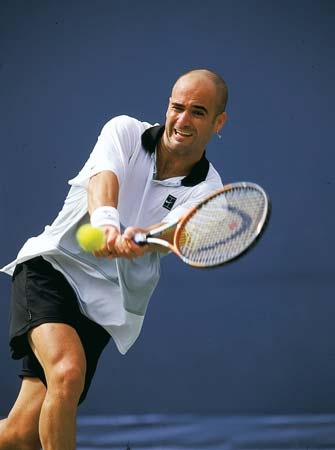 The men's game increasingly emphasized athleticism and power in the 1990s. Pete Sampras (Sampras, Pete) of the United States best epitomized this style of play, using devastating serves and ground strokes, along with exceptional agility, to claim a record-setting 14 grand slam titles. Players such as Patrick Rafter of Australia, Sweden's Stefan Edberg, and Russian Yevgeny Kafelnikov also claimed their share of major titles during the decade, but Andre Agassi surfaced as Sampras's primary rival. Agassi won singles titles at the Australian Open (1995, 2000, 2001, 2003), the French Open (1999), Wimbledon (1992), and the U.S. Open (1994, 1999) and finished the 1999 season as the top-ranked player on the tour.
The men's game increasingly emphasized athleticism and power in the 1990s. Pete Sampras (Sampras, Pete) of the United States best epitomized this style of play, using devastating serves and ground strokes, along with exceptional agility, to claim a record-setting 14 grand slam titles. Players such as Patrick Rafter of Australia, Sweden's Stefan Edberg, and Russian Yevgeny Kafelnikov also claimed their share of major titles during the decade, but Andre Agassi surfaced as Sampras's primary rival. Agassi won singles titles at the Australian Open (1995, 2000, 2001, 2003), the French Open (1999), Wimbledon (1992), and the U.S. Open (1994, 1999) and finished the 1999 season as the top-ranked player on the tour.Organization and tournaments
The ITF and the national associations that constitute it govern tennis worldwide; they oversee international competitions such as the Davis Cup and Federation Cup and tennis in the Olympic Games, which was restored to medal-sport status for the 1988 Games—the first time since 1924. The professional circuits were governed from the late 1970s by the Men's and Women's International Professional Tennis councils. These groups, made up of representatives of the ITF, players, and tournaments, oversee the international calendar, the implementation of rules and codes of conduct, and the training and supervision of tour officials. The councils work closely with the ATP and WITA, which supply a number of services and benefits to players and tournaments and maintain rankings that provide the basis for entry into tournaments and seedings.
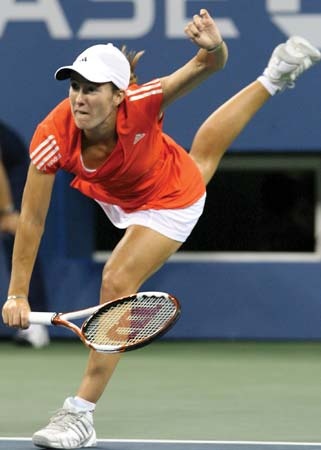 Until 1974, when South Africa won by default over India, only four nations had won the Davis Cup: Australia, Great Britain, France, and the United States. The championships of those four countries are the traditional “major” tournaments that make up the grand slam. Wimbledon (Wimbledon Championships) in Britain is the oldest, having been played on the lawns of the All England Club since 1877. The French championships (French Open), played at Stade Roland-Garros in Auteuil, on the outskirts of Paris, are recognized as the world's premier clay-court tournaments. The U.S. championships (United States Open Tennis Championships) were played on grass from their inception in 1881 through 1974; the next three years they were played on a synthetic clay surface at the West Side Tennis Club in Forest Hills, New York, and in 1978 the tournament moved to the rubberized asphalt courts of the USTA National Tennis Center in nearby Flushing Meadow Park. The Australian Championships (Australian Open) were played on grass in several cities until 1968, when they moved to Melbourne; in 1988 they moved within that city to the synthetic courts of the new Australian National Tennis Centre.
Until 1974, when South Africa won by default over India, only four nations had won the Davis Cup: Australia, Great Britain, France, and the United States. The championships of those four countries are the traditional “major” tournaments that make up the grand slam. Wimbledon (Wimbledon Championships) in Britain is the oldest, having been played on the lawns of the All England Club since 1877. The French championships (French Open), played at Stade Roland-Garros in Auteuil, on the outskirts of Paris, are recognized as the world's premier clay-court tournaments. The U.S. championships (United States Open Tennis Championships) were played on grass from their inception in 1881 through 1974; the next three years they were played on a synthetic clay surface at the West Side Tennis Club in Forest Hills, New York, and in 1978 the tournament moved to the rubberized asphalt courts of the USTA National Tennis Center in nearby Flushing Meadow Park. The Australian Championships (Australian Open) were played on grass in several cities until 1968, when they moved to Melbourne; in 1988 they moved within that city to the synthetic courts of the new Australian National Tennis Centre.The principal team events are the Davis Cup, Federation Cup, and Wightman Cup (U.S. versus British women). The Davis Cup series consists of five matches played over three days: two singles, one doubles, then two “reverse” singles. The Davis Cup draw was played in two zones from 1923 through 1965 and in four zones from 1966 through 1980. Starting in 1981, the top 16 teams competed in a World Group and all other participating nations in four zones. The Federation Cup (Fed Cup), inaugurated in 1963, is contested at one site over a one-week period, each series consisting of three matches: two singles and a doubles. The Wightman Cup alternates between U.S. and British sites and consists of best-of-seven matches: five singles and two doubles.
Play of the game
Court and equipment
The dimensions of the tennis court are 78 by 27 feet (23.8 by 8.2 metres) for singles and 78 by 36 feet (23.8 by 11.0 metres) for doubles. The height of the net at the centre is 3 feet (0.91 metre), and it is supported at each side of the court by posts 3.5 feet (1.1 metre) high placed 3 feet outside the court. Tennis was originally called lawn tennis, and grass courts are still in use, but the most common court materials today are clay (called “hard courts” in most places, although in the United States that term refers to any hard surface), cement, and a number of cushioned asphalt derivatives and synthetic surfaces. The latter may be hard surface or artificial grass, materials that have become popular for indoor courts along with the traditional wood.
A tennis ball consists of a pressurized rubber core covered with high-quality cloth, usually wool mixed with up to 35 percent nylon. Balls gradually go soft with use, and in tournament play they are changed at regular intervals agreed upon by officials and depending upon such factors as the court surface. Balls must have a uniform outer surface, and, if there are any seams, they must be stitchless. The ITF specifies that the ball must be yellow or white, between 2.5 and 2.8 inches (6.35 and 7.14 cm) in diameter, and between 1.975 and 2.095 ounces (56 and 59.4 grams) in weight. The ball must have a bounce between 53 and 58 inches (135 and 147 cm) when dropped 100 inches (254 cm) upon a concrete base.
Nothing in the rules defined the racket until 1981. After an ITF committee had made studies of the so-called “double-strung,” or “spaghetti,” racket, introduced in 1977, which had two layers of strings that imparted topspin on the ball, it was banned by the following rule:
A racket shall consist of a frame, which may be of any material, weight, size or shape and stringing. The stringing must be uniform and smooth and may be of any material. The strings must be alternately interlaced or bonded where they cross. The distance between the main and/or cross strings shall not be less than one quarter of an inch nor more than one-half inch. If there are attachments they must be used only to prevent wear and tear and must not alter the flight of the ball.
In 1979 the ITF limited racket length for professional play to 29 inches (73.7 cm). This maximum was applied to nonprofessional play in 2000. Maximum racket width is 12.5 inches (31.75 cm).
Principles of play
Opponents spin a racket or toss a coin to decide on side and service. The winner may decide to serve or receive service first (in which case the opponent chooses the side) or may decide on a choice of side (in which case the opponent may choose to serve or receive service first). The players serve alternate games and change sides after every odd number of games.
Beginning each game from behind his or her right-hand court, the server has both feet behind the baseline and strikes the ball diagonally across the net and into the opponent's right-hand service court. Should the ball on service strike the top of the net before falling in the correct service court, it is a “let” and is replayed. The server is allowed one miss, or “fault,” either into the net or outside the opponent's service court. Failure to deliver a correct service on two attempts constitutes loss of the point.
To return service, the receiver strikes the ball back (before it hits the ground a second time) over the net and within the boundaries of the opponent's court. After the service has been correctly returned, the players may volley the ball (i.e., hit it before it bounces) or hit it after its first bounce, and the point continues until one player fails to make a correct return. This may occur if a player fails to hit the ball over the net, hits it outside the opponent's boundaries, or fails to hit it before it strikes the ground a second time on his or her side of the net.
To win a game, a player must win four points and by a margin of two. The scoring goes 15, 30, 40, game; this system, derived from real tennis, is medieval in origin. It never has been satisfactorily explained why three points equal 40 rather than 45. Zero is generally referred to as “love,” which is thought to be derived from l'oeuf, the French word for “egg.” The server's score is called first; thus, 30–15 means that the server has two points to one, whereas 15–30 means that the receiver has two points to one. If both players reach 40, the score is said to be “deuce,” and the game continues until a player achieves first “advantage” and then the two-point margin for “game.” There is no limit to the number of times a game can go to deuce before it is decided, but in some competitions a so-called “no-ad” system is used, which means that no two-point margin is required and the first player to win four points wins the game. As points make up a game, games make up a set, and sets make up a match. The first player to win six games traditionally wins the set, although a two-game margin is again required; thus, a set in which each player has won five games cannot be won before 7–5.
Since the early 1970s virtually all competitions have come to employ tiebreakers to eliminate marathon sets. Usually played at six games all, the tiebreaker can consist of an odd number of points with no two-point margin required (“sudden death”) or an even number of points with a two-point margin required. For example, in a 12-point tiebreaker the first player to reach 7 points with a margin of 2 wins the tiebreaker game and the set, 7–6. Virtually all tournaments now play tiebreakers at six games all. In major tournaments and the Davis Cup, men generally play best-of-five-set matches and women best-of-three. In most other tournaments, men now also play best-of-three sets; women occasionally play best-of-five for finals. In Olympic (Olympic Games) competition, all matches are best-of-three sets, except for the men's finals, which are best-of-five.
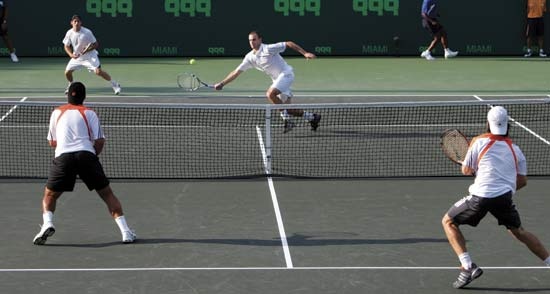 The same basic principles of play and scoring apply to doubles. Service alternates between the two opposing teams, but each team must decide at the start of each set which partner shall serve first. Equally, the receiving team must decide at the start of each set which of them shall receive service first, and they then receive service on alternate points for that game and set. Thus, the server will alternate sides of the court on successive points in each game, but the receiver will always receive on the same side of the court during that game (and the set).
The same basic principles of play and scoring apply to doubles. Service alternates between the two opposing teams, but each team must decide at the start of each set which partner shall serve first. Equally, the receiving team must decide at the start of each set which of them shall receive service first, and they then receive service on alternate points for that game and set. Thus, the server will alternate sides of the court on successive points in each game, but the receiver will always receive on the same side of the court during that game (and the set).Strategy and technique
Although successful strokes and strategy can vary widely on different court surfaces, on all but the slowest courts there has always been a premium on a punishing serve and effective play at the net. The server usually has a considerable advantage for two reasons. With a combination of power and clever angle and spin, he can win points outright with the serve, called an “ace” if the opponent cannot get his racket on the ball and a “service winner” if the opponent reaches it but cannot play it, or the server can force such a weak return that his second shot is an easy “kill.” Especially on faster surfaces, the server may also follow his delivery to the net and establish his position. At the net a player is always vulnerable to a passing shot—one angled cross-court or played down-the-line, beyond reach—but if the serve or approach shot puts the opponent under enough pressure, the server, now at the net, has the upper hand, since a volley is generally easier to put away (play for a point) than a ground stroke (one played on a bounce). An effective first serve is a considerable asset on any surface. The best servers not only deliver the ball hard but vary their patterns so that a receiver cannot anticipate where the serve is coming. Equally important is the ability to deliver an effective second service (one made after an initial fault), usually with less power but more spin or “kick.”
For good volleyers, the key to winning is to get to the net, behind either the serve or approach shot. For players whose strength is their ground stroke, the priority is to maneuver the opponent into a vulnerable position for a winning passing shot, placement, or drive that forces an error. All shots after the serve—volley or ground stroke—can be played on either the forehand (where, if the racket were viewed as an extension of the hand, the palm would be striking the ball) or the backhand (where the back of the hand would be striking the ball).
Styles of play at the top level have varied widely with changing court surfaces. When most major tournaments were played on grass, for instance, there was a distinct advantage to a powerful serve-and-volley game and short, controlled, underspin ground strokes that kept the ball low. When slow clay became the predominant surface of the professional game in the mid-1970s, there was more emphasis on solid ground strokes and topspin, which allowed players to loop the ball well over the net and have it bounce high, pinning opponents to the backcourt. Hard-surface courts of medium speed and true bounce favour an all-court game and enable both net rushers and baseliners to play their preferred styles.
Other strokes, besides the serve, volley, and drive, include the lob, overhead smash, half volley, and drop shot. The lob, a soft high-arched loop, can be played either defensively, to try to recover from an awkward, vulnerable position where an attacking stroke is impossible, or offensively, to get the ball over the reach of an opponent at the net and put him on the defensive. The player who makes an offensive lob often follows it to the net, but if a lob is not high enough to get over the opponent, it can be returned with an overhead smash, the most forceful of strokes. The player making the smash often leaps to hit the ball with a stroke similar to the serve from a position approximating the service toss. The half volley is a shot played on a very short bounce, usually a defensive stroke effected when one cannot quite reach an opponent's shot in the air and volley it. The drop shot, which is often hit from the same motion as a drive, attempts to get the ball just over the net with underspin so that it barely bounces, either catching an opponent flat-footed in the backcourt where he cannot reach the ball or forcing him to run in and lunge at the ball, leaving him off balance.
Winners of select tennis championships
Australian Open singles champions
Australian Open Tennis Championships-singles Australian Open Tennis Championships-singlesA list of Australian Open singles champions is provided in the table.
Australian Open doubles champions
Australian Open Tennis Championshipsdoubles Australian Open Tennis ChampionshipsdoublesA list of Australian Open doubles champions is provided in the table.
French Open singles champions
French Open Tennis Championships-singles French Open Tennis Championships-singlesA list of French Open singles champions is provided in the table.
French Open doubles champions
French Open Tennis Championshipsdoubles French Open Tennis ChampionshipsdoublesA list of French Open doubles champions is provided in the table.
Wimbledon singles champions
All-England (Wimbledon) Tennis Championships-singles All-England (Wimbledon) Tennis Championships-singlesA list of Wimbledon singles champions is provided in the table.
Wimbledon doubles champions
All-England (Wimbledon) Tennis Championshipsdoubles All-England (Wimbledon) Tennis ChampionshipsdoublesA list of Wimbledon doubles champions is provided in the table.
U.S. Open singles champions
United States Open Tennis Championships-singles United States Open Tennis Championships-singlesA list of U.S. Open singles champions is provided in the table.
U.S. Open doubles champions
United States Open Tennis Championshipsdoubles United States Open Tennis ChampionshipsdoublesA list of U.S. Open doubles champions is provided in the table.
Davis Cup champions
Davis Cup Davis CupA list of Davis Cup champions is provided in the table.
Fed Cup champions
Fed Cup Fed CupA list of Fed Cup champions is provided in the table.
Additional Reading
For an extensive history of tennis, see Heiner Gillmeister, Tennis: A Cultural History (1997). For current information, see the International Tennis Federation, World of Tennis (annual).
- George Colman, the Elder
- Warren
- Warren Beatty
- Warren, Bertram Eugene
- Warren Commission
- Warren De la Rue
- Warren, Earl
- Warren E. Burger
- Warren Edward Buffett
- Warren E. Preece
- Warren G. Harding
- Warren G. Harding: Inaugural Address
- Warren G. Harding: The Return to Normalcy
- Warren, Harry
- Warren Hastings
- Warren, Joseph
- Warren, J. Robin
- Warren, Leonard
- Warren, Mercy Otis
- Warren, Rick
- Warren, Robert Penn
- Warrensburg
- Warren Spahn
- Warren Wright
- Warri